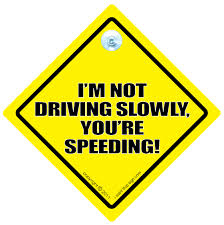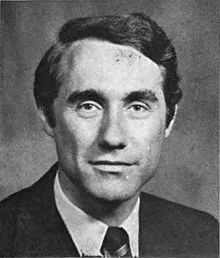Welcome to my humble blog. Come on in and bring some sunshine with you. Please don’t go away without saying hello. It gets lonely here when nobody comes to visit so please stay for just a few minutes. Even if you don’t find anything that interests you, go to leave a comment at the bottom of this message and tell me that you were here. It won’t cost you a dime but it will warm an old man’s heart. Thank you for being so kind. If you would like me to return your visit, leave the link to your site.
-
THINGS I HAVE SAID LATELY
- POLITICS AS USUAL?
- A VIEW FROM A DIFFERENT WINDOW III
- A VIEW FROM A DIFFERENT WINDOW II
- A VIEW FROM A DIFFERENT WINDOW
- A JACKRABBIT SHARES OUR YARD WITH US
- A STORY OF PILGRIMS 36 and final
- A STORY OF PILGRIMS 35
- A STORY OF PILGRIMS 34
- A STORY OF PILGRIMS 33
- ARE YOU BREAKING THE LAW?
- A STORY OF PILGRIMS 32
- A STORY OF PILGRIMS 31
- SAGE GROUSE, and then there were none
- A STORY OF PILGRIMS 30
- A STORY OF PILGRIMS 29
THINGS I HAVE SAID BEFORE
- February 2016 (2)
- January 2016 (2)
- December 2015 (2)
- November 2015 (2)
- October 2015 (1)
- September 2015 (3)
- August 2015 (3)
- July 2015 (3)
- June 2015 (1)
- May 2015 (3)
- April 2015 (2)
- March 2015 (4)
- January 2015 (3)
- December 2014 (2)
- November 2014 (4)
- October 2014 (2)
- September 2014 (3)
- August 2014 (2)
- July 2014 (5)
- June 2014 (4)
- April 2014 (1)
- January 2014 (3)
- November 2013 (2)
- October 2013 (3)
- September 2013 (1)
- August 2013 (2)
- May 2013 (5)
- April 2013 (1)
- March 2013 (3)
- February 2013 (4)
- January 2013 (3)
- December 2012 (4)
- November 2012 (4)
- September 2012 (2)
- August 2012 (3)
- July 2012 (2)
- June 2012 (1)
- May 2012 (5)
- April 2012 (3)
- August 2011 (1)
- June 2011 (1)
- May 2011 (1)
- March 2011 (2)
- January 2011 (1)
-
Join 101 other subscribers
OTHER BLOGS TO VIEW
- ☛☛☛ BUY BOOKS WITH PAYPAL ☻☻☻ Use Paypal to make a purchase
- Broadside
- Documentation
- Freshly Pressed
- Kristen Lamb's Blog
- Our Natural Surroundings by Jim Fuller Photos from the Rocky Mountains of Montana
- Patrick Latter (hiking photographer)
- The Naked Truth (blog)
- WHY EVOLUTION IS TRUE
Blog Stats
- 7,231 hits
Sign In / sign out
OTHER BLOGS TO VIEW
- Andrew's View of the Week
- brucelouisdodson
- John Knifton
- David Gaughran
- Laurence O'Bryan - No 1 Best-Selling Conspiracy Thriller Author
- The Zee Diaries
- THE EDITOR'S JOURNAL
- lorettammiller
- Add Your Piece of History
- A Hundred Years Ago
- "Greatest Generation" Life Lessons
- Holy Sheepdip!
- Pacific Paratrooper
- Canadian Hiking Photography
- Bucket List Publications
- Nadine Feldman, Author
- Broadside
- Kristen Lamb
PAGES TO VIEW




 Whatever the reason, why not ease up a little with that right foot and relieve some of the tension you are causing for yourself and the others who are sharing the road with you? Deep down in your boots, you know that, in your haste, you sometimes pass another car under unsafe conditions. Maybe you were not entirely sure that you had enough time or that the car ahead of you wasn’t going to swing out to pass. How many times have you cussed out another driver for getting in your way when, in honesty, you knew that this little sign applied to you?
Whatever the reason, why not ease up a little with that right foot and relieve some of the tension you are causing for yourself and the others who are sharing the road with you? Deep down in your boots, you know that, in your haste, you sometimes pass another car under unsafe conditions. Maybe you were not entirely sure that you had enough time or that the car ahead of you wasn’t going to swing out to pass. How many times have you cussed out another driver for getting in your way when, in honesty, you knew that this little sign applied to you?
POLITICS AS USUAL?
KNOW THIS GUY? “What goes around comes around.

He is Edward “Ed” Mezvinsky, born January 17, 1937.
Then you’ll probably say, “Who is Ed Mezvinsky?”;
Well, he is a former Democrat congressman who represented Iowa’s 1st congressional district in the United States House of Representatives for two terms, from 1973 to 1977.
He sat on the House Judiciary Committee that decided
the fate of Richard Nixon.
He was outspoken saying that Nixon was a crook and a disgrace to politics and the nation and should be impeached.
He and the Clintons were friends and very politically
intertwined for many years.
Ed Mezvinsky had an affair with NBC News reporter Marjorie Sue Margolies and later married her after his wife divorced him.
In 1993, Marjorie Margolies-Mezvinsky, then a freshman Democrat in Congress, cast the deciding vote that got President Bill Clinton’s controversial tax package through the House of Representatives.
In March 2001, Mezvinsky was indicted and later pleaded guilty to 31 of 69 counts of bank fraud, mail fraud, and wire fraud.
Ed Mezvinsky embezzled more than $10 million dollars from people via both a Ponzi scheme and the notorious Nigerian e-mail scams.
He was found guilty and sentenced to 80 months in federal prison.
After serving less than five years in federal prison, he was released in April 2008 and remains on federal probation.
To this day, he still owes $9.4 million in restitution to his victims.
About now you are saying, “So what!”;
Well, this is Marc and Chelsea Mezvinsky.
That’s right; Ed Mezvinsky is Chelsea Clinton’s father-in law.
Now Marc and Chelsea are in their early thirties and purchased a 10.5 million dollar NYC apartment (after being married in George Soros’ mansion).
Has anyone heard mention of any of this in any of the media?
Share this blog: